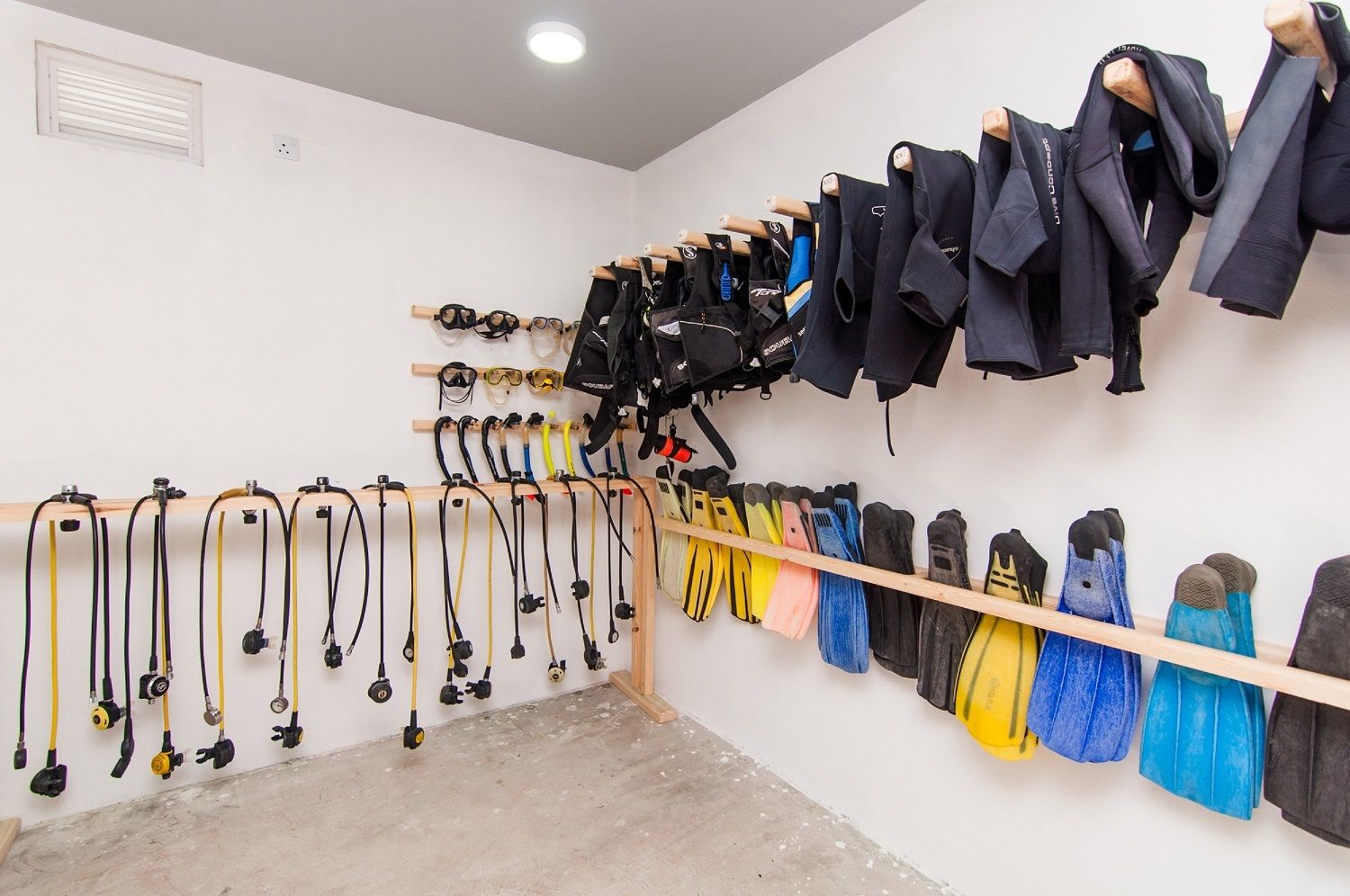Image Source: Google
Scuba diving is an exhilarating activity that allows you to explore the underwater world and witness breathtaking marine life up close. However, to fully enjoy this experience, it is essential to have well-organized and properly stored scuba gear. Having a cluttered mess of diving equipment can not only make it difficult to find what you need but also lead to damage or deterioration of your gear. In this guide, we will provide you with tips and tricks to transform your scuba gear storage from chaotic to dive-ready.
Assess Your Current Gear Storage
Before you can start organizing your scuba gear, it is crucial to assess your current storage situation. Take a look at where you currently keep your diving equipment and identify any issues or challenges you may be facing. This will help you determine the best approach to reorganizing and storing your gear effectively.
Things to consider during your assessment:
- Is your gear scattered in various locations, or do you have a designated storage area?
- Are your items properly cleaned and dried before storage?
- Do you have adequate space to store all your gear safely?
- Are there any signs of damage or wear on your equipment due to improper storage?
Invest in Proper Storage Solutions
Once you have assessed your current gear storage situation, it's time to invest in proper storage solutions to keep your scuba equipment organized and well-maintained. There are various storage options available, ranging from gear bags and boxes to cabinets and racks. Choose the storage solution that best suits your needs and space availability.
Popular storage solutions for scuba gear include:
- Mesh bags for storing wet gear and allowing it to dry
- Hard cases or waterproof containers for protecting delicate equipment
- Gear racks or hangers for hanging wetsuits and BCDs to dry
- Dedicated storage cabinets or shelves for organizing smaller items like masks, snorkels, and regulators
Organize Your Gear Efficiently
Proper organization is key to maintaining a clutter-free scuba gear storage space. By organizing your equipment efficiently, you can easily locate and access the items you need for your dives. Create a system that works for you and ensures that each piece of gear has its designated place.
Tips for efficient gear organization:
- Categorize your gear by type (e.g., wetsuits, fins, masks) for easy identification
- Label storage containers or shelves to indicate the contents inside
- Utilize hooks, hangers, or pegboards to maximize vertical storage space
- Keep frequently used items within reach and less used items higher or lower
Maintain Your Gear Regularly
Proper maintenance of your scuba gear is essential for its longevity and performance underwater. Regularly inspecting, cleaning, and servicing your equipment can help prevent issues such as corrosion, mold growth, or deterioration. Make it a habit to check your gear before and after each dive to ensure everything is in good working condition.
Tips for maintaining scuba gear:
- Rinse your gear with fresh water after each dive to remove salt and debris
- Thoroughly dry your equipment before storing it to prevent mold and mildew growth
- Check seals, buckles, and zippers for any signs of wear or damage
- Store your gear in a cool, dry place away from direct sunlight and extreme temperatures
Review and Update Your Storage System Regularly
As your scuba gear collection grows or your diving needs change, it's important to review and update your storage system regularly. Periodically assess your gear storage setup to ensure it still meets your requirements and make any necessary adjustments to accommodate new equipment or improve organization.
Signs that it's time to update your storage system:
- You are struggling to find space for new gear additions
- Your current storage solutions are no longer adequate or effective
- You have outgrown your existing storage capacity
- You need to optimize your storage layout for better accessibility and convenience
